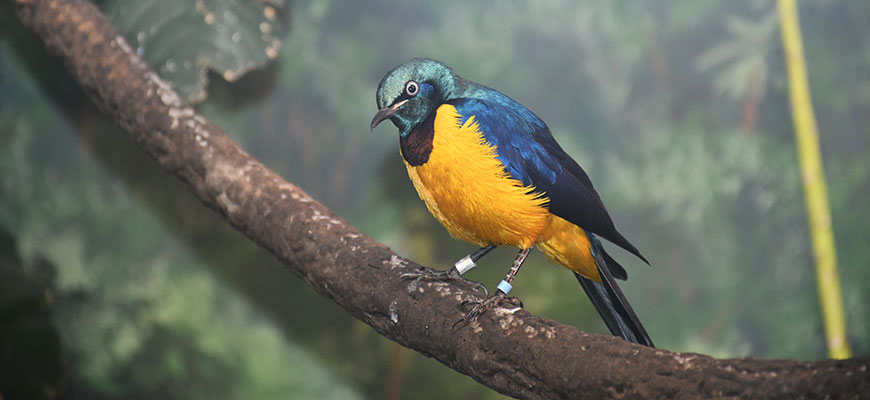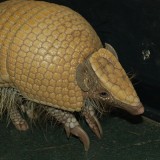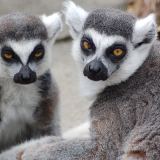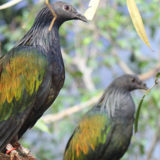CLASSIFICATION
Order: Passeriformes
Family: Sturnidae
Genus: Lamprotornis
Species: regius
Order: Passeriformes
Family: Sturnidae
Genus: Lamprotornis
Species: regius
RANGE
Northeastern Africa including Somalia, Kenya and Tanzania
HABITAT
Prefer grasslands, savannah, dry-thorn forests and scrublands.
SIZE
Can reach around 7 inches in length
LIFE EXPECTANCY
12 – 14 years
REPRODUCTION
- Females lay 3 – 5 eggs which are blue-green in color.
- Incubation lasts from 11 – 14 days
- Birds are monogamous and family groups care for young by foraging and building nests.
- Nests are typically made in tree holes, with leaves, roots and other vegetation.
DIET
Their diet consists of mostly insects and termites.
BEHAVIOR
Golden-breasted starlings are often found in family groups where they work together to care for their young by foraging for insects in the grasslands of northeastern Africa. This is referred to as cooperative breeding. Unlike other species in the starling family, they do not consume fruits. Aside from insects, they have been known to eat small crustaceans and reptiles.
POINTS OF INTEREST
- Termites are their favorite food! They catch the termites by opening their ground tunnels with rapid flicks of their bill.
- Can live in groups of 3 – 12 birds.
STATUS
Common





